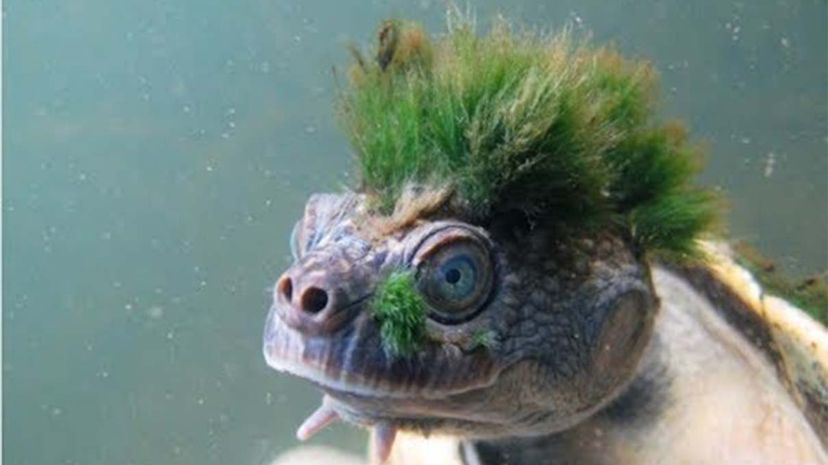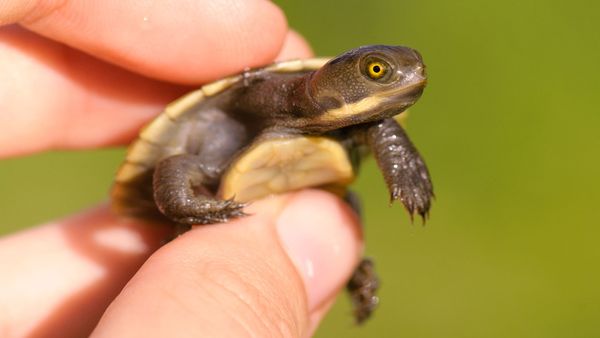
Did you ever date a guy, probably sometime in your early 20s, who sported a green mohawk, some strange piercings and seemed to breathe out of his genitals? Well, in hindsight you might be glad that dalliance was as brief as it was, but the experience might also predispose you to having a bit of a soft spot for the Mary River turtle (Elusor macrurus), which ranks 29th on the first Evolutionarily Distinct and Globally Endangered (EDGE) Reptiles List. The list details the 100 most endangered reptiles in the world, according to the Zoological Society of London (ZSL).
What makes the Mary River turtle so captivating is the shock of vivid algae that grows on its head, the strange spikes jutting out of its chin, and the fact that it can hunker down underwater for as long as three days, breathing out of gills in its cloaca — the all-purpose hole that serves the reproductive, digestive and urinary systems of reptiles (as well as others like birds, amphibians and monotremes). It's possible as few as 136 of these creatures exist in the wild — they find themselves on this precarious footing partly because they have a very small native range to begin with, they are very slow to reach sexual maturity, and their docile temperament and outlandish looks made them very popular targets for the exotic pet trade in the 1960s and 1970s. It's hard out there for reptiles, no matter how much they resemble a mythological creature.
Advertisement
ZSL's EDGE of Existence program was launched in 2007, but this is its first list focused exclusively on reptiles. Backed by a study published April 11, 2018 in the journal PLOS One, the EDGE List names exotic reptiles from far flung reaches of the globe, including the electric blue Williams' dwarf gecko (Lygodactylus williamsi), the earthworm-like Madagascar blind snake (Xenotyphlops grandidieri) and the eerily sculptural Indian crocodile, the gharial (Gavialis gangeticus).
"Reptiles often receive the short end of the stick in conservation terms, compared with the likes of birds and mammals," EDGE Reptiles coordinator Rikki Gumbs said in a press release. "However, the EDGE Reptile List highlights just how unique, vulnerable and amazing these creatures really are."
Not only that, many reptiles represented on the list are the only survivors of ancient lineages of reptiles that date back millions of years, to the Age of Dinosaurs.
"If we lose these species there will be nothing like them left on Earth," Gumbs said. "Using ZSL's EDGE methodology to create the world's first EDGE Reptile List, not only are we providing conservation scientists with a quantitative tool to prioritise species for conservation, but we also hope to bring the plight of these weird and wonderful creatures to the public's attention before they disappear."
Advertisement

